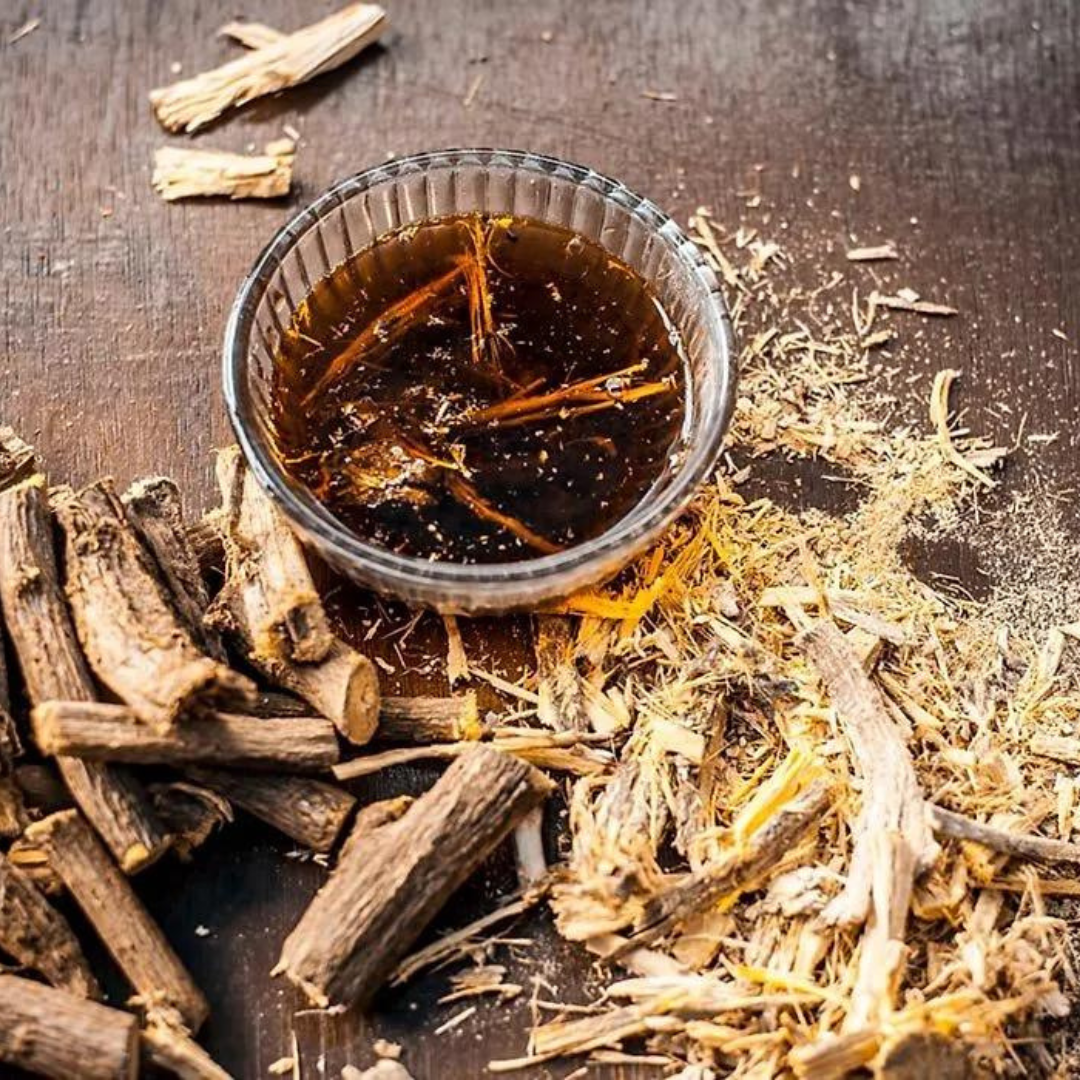How To Use Organic Licorice Root For Skin?

Focusing on Licorice Root for Skin Care
Licorice root has long been revered for its medicinal properties and is now gaining popularity for its numerous benefits for skin health. In this comprehensive guide, we’ll explore the origins and benefits of licorice root, delve into its various uses, and specifically focus on how to use organic licorice root for skin care.
What is Organic Licorice Root?
Licorice root, scientifically known as Glycyrrhiza glabra, is a plant native to Europe and Asia. The root of the plant is harvested and used for its medicinal properties. Organic licorice root refers to licorice that has been grown without the use of synthetic fertilizers, pesticides, or genetically modified organisms (GMOs), ensuring a more natural and environmentally friendly product.
History and Traditional Uses
Organic Licorice root has been used for thousands of years in traditional medicine systems such as Chinese, Egyptian, and Greek medicine. Historically, it was utilized for treating a variety of ailments, including respiratory issues, digestive disorders, and skin conditions. Its sweet flavor also made it a popular ingredient in candies and herbal teas.
Health Benefits of Organic Licorice Root
Anti-inflammatory Properties
One of the primary benefits of licorice root is its potent anti-inflammatory properties. This makes it effective in treating conditions such as arthritis, eczema, and other inflammatory skin issues. The active compound glycyrrhizin is primarily responsible for these effects.
Antioxidant Effects
Organic Licorice root contains a wealth of antioxidants, which help to protect the body from damage caused by free radicals. This can slow down the aging process and reduce the risk of chronic diseases.
Immune System Support
The compounds found in licorice root can help to boost the immune system, making it easier for the body to fend off infections. It is particularly effective in fighting off viral infections like the common cld and flu.
Digestive Health
Organic Licorice root is known to soothe the digestive tract, making it beneficial for conditions such as ulcers, acid reflux, and gastritis. It helps to promote a healthy mucous lining in the stomach and intestines, which protects against irritation and inflammation.
How to Use Licorice Root for Skin
Using licorice root for skin care can provide a range of benefits, from reducing inflammation to brightening the complexion. Here’s a detailed look at how to use licorice root for skin:
Licorice Root Extract
Organic Licorice root extract is a concentrated form of the herb that can be easily incorporated into your skincare routine. It is available in both liquid and powder forms. You can add a few drops of the liquid extract to your moisturizer or serums to enhance their efficacy.
DIY Licorice Root Face Mask
Creating a DIY face mask with licorice root powder is a simple and effective way to reap its skin benefits. Mix one tablespoon of licorice root powder with honey or yogurt to form a paste. Apply it to your face and leave it on for 15-20 minutes before rinsing off. This mask can help to brighten your complexion and reduce the appearance of dark spots.
Licorice Root Infused Toner
Infusing licorice root in your toner can help to soothe irritated skin and provide a refreshing boost. Boil a cup of water and add a tablespoon of dried licorice root. Let it steep for 10-15 minutes, then strain and let it cool. Use a cotton pad to apply the toner to your face after cleansing.
Organic Licorice Root Spot Treatment
For targeted treatment of dark spots and blemishes, a licorice root spot treatment can be highly effective. Mix a small amount of licorice root extract with aloe vera gel and apply it directly to the affected areas. This can help to lighten pigmentation and reduce redness.
Organic Licorice Root-Infused Oil
Organic Licorice root-infused oil can be used as a nourishing treatment for dry and sensitive skin. To make this, combine dried licorice root with a carrier oil such as jojoba or almond oil. Let it infuse for a week in a dark, cool place. Strain the oil and use it as a facial oil or add it to your favorite skincare products.
Benefits of Using Organic Licorice Root for Skin
Understanding how to use licorice root for skin care is essential to fully appreciate its benefits. Here are some key advantages:
Skin Brightening
Licorice root is known for its ability to brighten the skin and even out skin tone. The compound glabridin inhibits the enzyme tyrosinase, which is responsible for pigmentation, helping to reduce the appearance of dark spots and hyperpigmentation.
Anti-Aging Properties
The antioxidants in licorice root help to combat the effects of free radicals, which can cause premature aging. Regular use of licorice root can help to reduce the appearance of fine lines and wrinkles, giving the skin a more youthful appearance.
Soothing and Anti-Inflammatory
Licorice root has natural anti-inflammatory properties that can help to soothe irritated and inflamed skin. It is particularly beneficial for conditions such as eczema, psoriasis, and rosacea.
Moisturizing
Licorice root helps to maintain the skin’s moisture balance, keeping it hydrated and supple. This makes it an excellent ingredient for dry and sensitive skin types.
How to Choose and Store Organic Licorice Root
When selecting licorice root, look for products that are certified organic to ensure they are free from harmful chemicals. It is available in various forms, including dried root, powder, and extract. Store licorice root in a cool, dry place, away from direct sunlight, to preserve its potency.
Potential Side Effects and Precautions
While Organic licorice root offers numerous benefits, it is essential to be aware of potential side effects and precautions:
Hormonal Effects
Licorice root can mimic estrogen in the body, which may affect hormone levels. It is advisable for pregnant or breastfeeding women to avoid using licorice root.
Blood Pressure
Glycyrrhizin in licorice root can raise blood pressure and lower potassium levels. People with high blood pressure or heart conditions should consult a healthcare provider before using licorice root.
Allergic Reactions
Some individuals may experience allergic reactions to licorice root. It is recommended to perform a patch test before applying it to the skin to ensure there is no adverse reaction.
Maximizing Licorice Root’s Benefits
Organic licorice root is a versatile and beneficial herb with a wide range of applications, particularly in skin care. Understanding how to use licorice root for skin can help you harness its powerful properties to achieve a brighter, more youthful complexion. From face masks and toners to spot treatments and oils, there are numerous ways to incorporate this natural remedy into your skincare routine. However, always consider potential side effects and consult with a healthcare provider if you have any underlying health conditions. Embrace the natural power of licorice root and enjoy the numerous benefits it has to offer for your skin and overall health.











